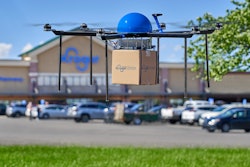
The global supply chain industry experienced a complete upheaval as a result of the Coronavirus disease (COVID-19) pandemic.
Seismic shifts seemed to occur in an instant. Entire supply chains were upended as manufacturing facilities temporarily closed due to employee illness; restaurant, foodservice, hospital and education operations were reduced or shut down; and consumers made massive changes in their buying and consumption behaviors.
The Federal Reserve Bank of Kansas City, Kansas, released a report in July 2020 that succinctly captured the wholly unanticipated and painful issues that faced the protein/meat industry.
“Alongside disruptions in meat production, rapid shifts in consumer demand shocked supply chains following the emergence of COVID-19. Household expenditures on food at grocery stores to be consumed at home typically are almost equal with expenditures on food consumed outside the home at restaurants. Following the emergence of COVID-19 in the United States, however, expenditures on food away from home declined sharply, and expenditures on food at home increased. In addition, starting in March, foot traffic at supermarkets increased, while activity at restaurants declined sharply. Foot traffic at supermarkets was roughly double that of restaurants through the first week of May (2020),” the report says.
Europe faced similar disruptions in food supply chains as consumers followed government orders to social distance. New, opportunistic supply chains and food concepts emerged, replacing broad-based, established supply chains with hyperlocal alternatives while meeting new consumer demands, further disrupting traditional channels.
All of this is to say that the pain felt within supply chains was real, the challenges faced were unlike anything seen before and the need for reasoned responses was great. Smoothly oiled supply chain operations no longer met market demands thanks to shutdowns, production delays, shortages of goods and attempts to pivot. As a result, managers were often in the dark as to where goods were in the supply chain, what condition they were in and when and sometimes if they would arrive.
This lack of data and real-time insights from supply chains strangled many businesses’ ability to operate let alone pivot to possible solutions. However, from a glass-half-full perspective, what the supply chain disruptions of 2020 also did was reveal systematic weaknesses and the need for strategic risk mitigation.
Mitigating risk by increasing the availability of actionable data
A common theme facing throughout the height of the pandemic was a lack of live insight into supply chains, which made quick responses to disruptions nearly impossible. For example, without sufficient, real-time information as to where one’s products are and what condition they’re in, decisions are likely based on assumptions rather than data. And, in rapidly changing scenarios where one must consider multiple alternatives, trade-offs and scenarios, that’s just not good enough. Decision-makers need actionable data just at specific points, but across the supply chain.
The net effect of all of this is the technology that has slowly been finding its way into supply chains will find the path to acceptance and adoption accelerated. A survey shared by Foley and Lardner, LLP found that nearly half of all respondents (47%) were considering new tools or applications that improve supply chain visibility and tracking, and 39% were looking to operational analytics to better track business metrics and indicators. This was especially true for larger companies. Almost across the board, the more employees a respondent’s company had, the more interested its leaders were in technology.
Technology that facilitates data collection, insights and analysis allows supply managers to access one source of data for tracking purposes, while real-time visibility reduces inventory and underutilization across the chain.
So, what technologies should companies, particularly those in industry sectors with products that are hygiene-sensitive, fast-moving and perishable, be looking to implement to gain meaningful, real-time insights from their supply chains? In some cases, the answer may be found in unexpected places such as Internet of Things (IoT)-enabled pallets.
High-tech, IoT pallets: the new game changer
IoT refers to the connection of devices to the Internet and each other. Each IoT component has a unique identifier that allows it to transmit data without the assistance of human intervention. While the term may be new to some, the technology has become ubiquitous. Tech Jury reports that 35 billion IoT devices will be installed worldwide by the end of 2021. Market analysis on the IoT conducted by Machine Research predicts that the IoT market will be worth $4 trillion in just four years. And, thanks to innovators, sensor-equipped pallets that leverage the cloud and the Internet will bring previously unimagined real-time insights to supply chains.
What’s interesting is that one of the initial drivers for developing IoT-connected pallets is to reduce pallet loss and replacement costs of long-lasting plastic and composite pallets.
How are you preparing for the next supply chain disruption?
Interest in supply chain technology that can mitigate risk and minimize the impact of disruptions is high. Some of the best solutions are foundational. But, cloud-based supply chain intelligence platforms will carefully maintain a pool of hygienic, cold chain-optimized IoT pallets.




















